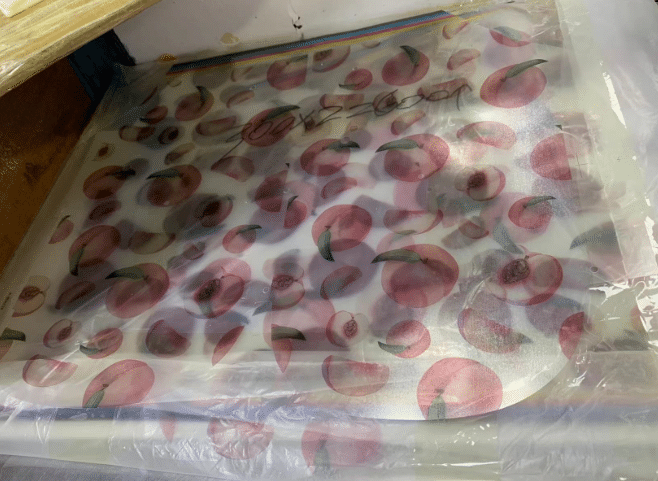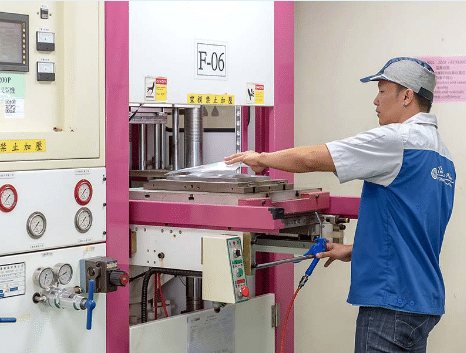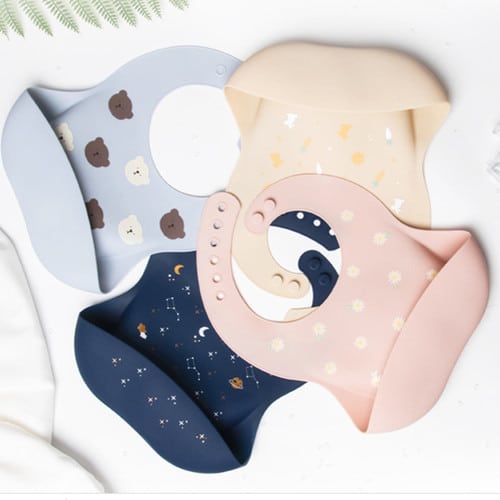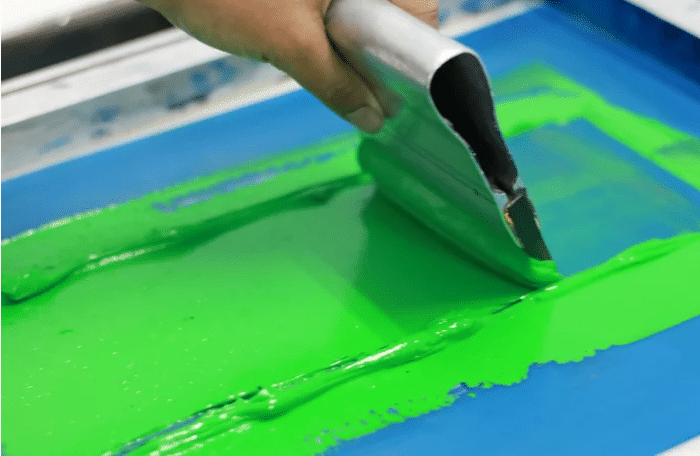In-Mold Decoration: Print Patterns or logos On Silicone Product
In-mold decorating (IMD) is a process of labeling or decorating molded Silicone products or components during the molding cycle. The label, logo, or pattern becomes an integral part of the final product, creating a fully decorated item at the press.
In this process, a pre-printed label or decorated film is inserted in the open silicone compression or injection mold and held in place via vacuum ports, electrostatic charge or another method. When the mold is closed, the Silicone resin is injected into the mold, encapsulating the label permanently within the finished part.
What Is In-Mold Decoration?
The in-mold decoration involves using a polymer carrier, usually on a reel-to-reel device, to integrate graphics onto components. The carrier (or film) normally contains multiple versions of the design, so several components can be created from a single continuous film.
A Brief History Of In-Mold Decoration
In-Mold Decorating was first used in the mid 1970’s as an alternative to decals and pressure-sensitive labels. Early adopters quickly realized the benefits of in-mold labeling extend across multiple areas of the business, from enhanced design options and message durability to manufacturing efficiency and improved supply chain management. In-mold technology enabled a significant shift in the labeling and decoration of plastic products.
Because parts were now removed from the injection mold fully decorated, manufacturers eliminated additional costly and time-consuming post process decoration. Not only did this technology remove the necessity for a separate process, but it allowed manufacturers to move this entire process to their injection molder.
Although IMD has become prolific in some industries, certain limitations have prevented some manufacturers from deploying this process. Recent advancements have lifted most of the limitations and created new opportunity for these manufacturers. In-mold technology has advanced significantly since its infancy.
Current innovations in three-dimensional (3-D) IML have expanded capabilities and opened in-mold decoration to new product types, allowing the benefits of cost savings and manufacturing efficiencies across nearly all industries. This now provides manufacturers endless options to replace metal forms, painting, dipped coatings, pad printing, and other post-production decorative techniques with a durable, high-quality, single-step label that creates a fully decorated resin part right in the mold.
How Does In-Mold Decoration Work?
In-Mold Decorating provides original equipment manufacturers (OEMS) and molders an alternative method for decorating plastic parts. With IMD, graphics are printed on a film, using one or a hybrid of several printing processes, which is then inserted into a mold cavity. A compatible resin is then injection molded behind or over the decorated appliqué film, permanently embedding it into a molded part. The result is a highly durable, eye-catching part that provides a great user experience for human-machine-interface (HMI) applications. We create IMD solutions for customers in the automotive, home appliances, medical devices and consumer electronics industries.
Different Types Of In-Mold Decoration
1. Insert molding
The insert molding process involves printing the image on a flat, rigid substrate and forming it with pressure and/or heat using matched metal dies. In this way, a semi-rigid insert is formed which can be placed in the mold. The plastic is injected into the mold behind the insert and it becomes part of the mold ment. The robot arm which removes the finished part also emplaces a fresh set of inserts in the same operation.
2. Foil in-mold decorating
The ability to print the original decoration on a flat surface permits the use of a wide range of printing techniques resulting in sophisticated and highly detailed decoration. The decoration is modified to account for the deformation which takes place during the forming stage. Although the cost of the insert must be accounted for, this technique can accommodate a wider range of complex contouring than any of the other plastics decorating methods. This process gained wide acceptance in the automobile industry for use in wood grained interior panels and is also being used for telephone headsets.
Each method has its advantages and disadvantages, and the choice will depend on the specific application and personal preferences.
Advantages And Disadvantages Of In-Mold Decoration
The Advantages Of In-Mold Decoration
Reduction in WIP inventory- IMD produce finished products:
The Disadvantages Of In-Mold Decoration
High Tooling Cost: For in-mold decoration to be efficient, it requires a well-designed and properly constructed mold. This can be very challenging and complicated. A lot of investment is required to design and construct accurate molds for in-mold decoration.
Expensive Machinery: The machines used for in-mold decoration are expensive. Sometimes, robots and highly automotive processes are used in order to achieve the desired plastic decoration.
Complicated Process: The in-mold decoration process is a complex and specialized process. A lot of challenges can be faced from the development stage to product release. They are often challenges with tool design, molds, vendor sourcing, and logistics supply. This can slow down the production process.
Design Restriction: injection molding comes with few design restrictions.
Applications Of In-Mold Decoration In Different Industries
This method is used for products with a longer life span. These would be parts for appliances, toys, automotive components, lawn and garden equipment, and other durable products. The label material and thickness vary, and this method is used with thick-walled, lower-cavity injection mold machines.
Choosing The Right Substrate of In-Mold Decoration:
insert molding and foil in-mold decorating. The insert molding process involves printing the image on a flat, rigid substrate and forming it with pressure and/or heat using matched metal dies. In this way, a semi-rigid insert is formed which can be placed in the mold. The plastic is injected into the mold behind the insert and it becomes part of the moldment. The robot arm which removes the finished part also emplaces a fresh set of inserts in the same operation.
The ability to print the original decoration on a flat surface permits the use of a wide range of printing techniques resulting in sophisticated and highly detailed decoration. The decoration is modified to account for the deformation which takes place during the forming stage. Although the cost of the insert must be accounted for, this technique can accommodate a wider range of complex contouring than any of the other plastics decorating methods. This process gained wide acceptance in the automobile industry for use in woodgrained interior panels and is also being used for telephone headsets.
Equipment And Materials Required For In-Mold Decoration
To do In-Mold Decoration, you will need the following equipment and materials:
The four processes required for IMD are printing, forming, trimming and molding.
- IMD Foil-Film paper
- Compress mold or injection mold (Silicone baby bibs tooling)
- Heat Press and Compress
- Substrate (Silicone material or Plastic material)
Tips For Achieving High-Quality In-Mold Decoration Prints
CREATE HIGH-QUALITY, 3D GRAPHICS
In-mold decorating removes many of the limitations and frustrating aspects of post-mold decorating – especially when it comes to curved parts or 3D areas. Thanks to advancements in printing technology, designers have various printing options at their disposal, including colors, textures, and effects. The end result? Elegant, vibrant, and photo-realistic graphics integrated into your product.
ENABLE PRODUCT DIFFERENTIATION.
In-mold decorating opens the door to creative design options that would be too difficult or expensive with other methods. Virtually any shape you can create with injection molding can feature branding, graphic elements, instructional text, and more.
IMPROVE QUALITY AND DURABILITY
When creating a high-quality, durable product, the notion that “less is more” often holds true. Combining the plastic form and decoration eliminates a layer that can affect performance or wear out prematurely. You don’t have to worry about whether a label will fit or if the paint will wear off. What’s more, you can add coatings to the in-mold process to enhance the graphic overlay’s resistance to abrasion, chemicals, and other factors.
INCORPORATE UNIQUE OR ADVANCED FEATURES
With in-mold decorating, you’re not restricted to adding just printed graphic elements. Other surface features that can be added include windows, lenses, embossing, and more. You can also add in-mold electronics to create backlighting, indicators, dead fronting, and capacitive touch, just to name a few.
Tips For Achieving High-Quality In-Mold Decoration Prints
CREATE HIGH-QUALITY, 3D GRAPHICS
In-mold decorating removes many of the limitations and frustrating aspects of post-mold decorating – especially when it comes to curved parts or 3D areas. Thanks to advancements in printing technology, designers have various printing options at their disposal, including colors, textures, and effects. The end result? Elegant, vibrant, and photo-realistic graphics integrated into your product.
ENABLE PRODUCT DIFFERENTIATION.
In-mold decorating opens the door to creative design options that would be too difficult or expensive with other methods. Virtually any shape you can create with injection molding can feature branding, graphic elements, instructional text, and more.
IMPROVE QUALITY AND DURABILITY
When creating a high-quality, durable product, the notion that “less is more” often holds true. Combining the plastic form and decoration eliminates a layer that can affect performance or wear out prematurely. You don’t have to worry about whether a label will fit or if the paint will wear off. What’s more, you can add coatings to the in-mold process to enhance the graphic overlay’s resistance to abrasion, chemicals, and other factors.
INCORPORATE UNIQUE OR ADVANCED FEATURES
With in-mold decorating, you’re not restricted to adding just printed graphic elements. Other surface features that can be added include windows, lenses, embossing, and more. You can also add in-mold electronics to create backlighting, indicators, dead fronting, and capacitive touch, just to name a few.
Frequently Asked Questions About In-Mold Decoration
Conclusion
In-Mold Decorating printing is a versatile and cost-effective printing method that can be used to create high-quality, full-color prints on various substrates, including silicone baby products. With the right equipment, materials, and techniques, you can create beautiful and long-lasting designs that are sure to impress. Whether you are printing t-shirts, jerseys, hats, bags, or promotional items, In-Mold Decorating is a great choice for producing small runs and custom designs. Follow our tips and FAQs to get the most out of your In-Mold Decorating projects.






